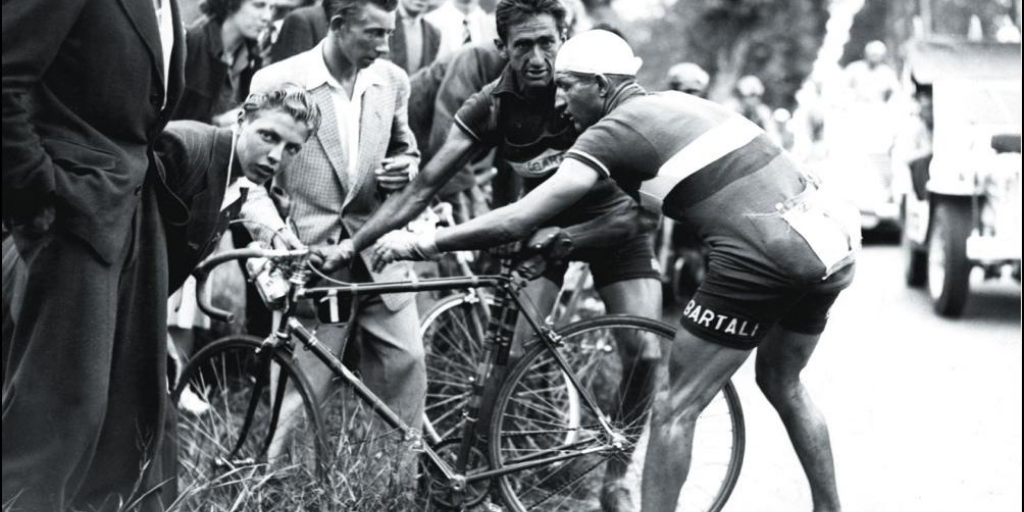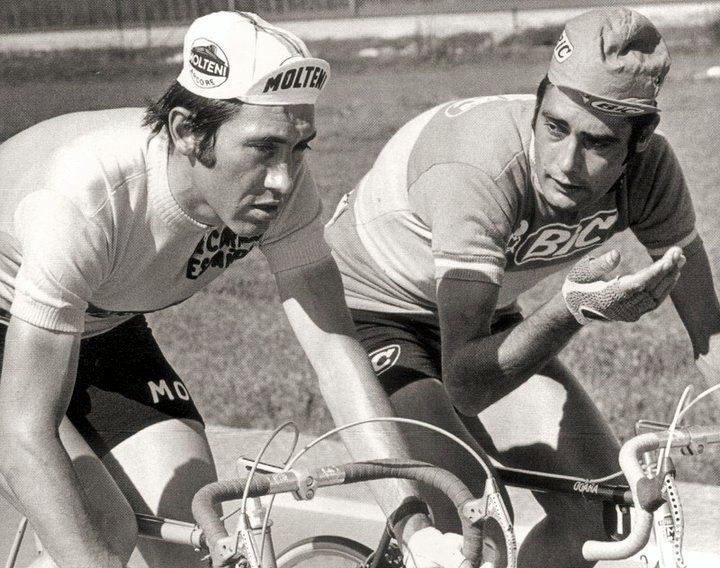The Tour de France is more than just a race—it’s a living drama played out on two wheels, across mountains, cobbles, and decades. For every glorious victory, there’s a moment where fate intervened: a crash, a protest, a misjudged strategy, or a stubborn ponytail. These are the stories that leave us wondering what might have been—moments where the yellow jersey slipped away not from weakness, but from circumstance. Here are five of the most tantalizing “What If” moments in Tour de France history—episodes where everything could have changed.
1. 1950 – What if Bartali and the Italians hadn’t walked out?
What happened: During the 1950 Tour, tensions between French fans and the Italian team escalated. After a heated incident on the Col d’Aspin, where Gino Bartali was allegedly assaulted by spectators, he demanded the entire Italian team withdraw in protest. At the time, Italian teammate Fiorenzo Magni was in yellow and leading the race.

What if? Magni could have won a second Tour, solidifying Italy’s dominance. Bartali, nearing the twilight of his career, might have had one last shot at a third title. Instead, the walkout handed the race to Swiss rider Ferdinand Kübler and left behind one of cycling’s most politically charged exits.
2. 1971 – What if Luis Ocaña hadn’t crashed on the Col de Menté?
What happened: Luis Ocaña was leading the Tour, riding stronger than the great Eddy Merckx, who he had dropped multiple times in the mountains. But on a rain-soaked descent of the Col de Menté, Ocaña crashed and was hit by another rider. Despite holding the yellow jersey, he was forced to abandon.

What if? Ocaña was on track to do the impossible: defeat Merckx in his prime. His crash gifted Merckx another Tour victory. Fans have long mourned what might have been one of the greatest triumphs in cycling history—had a single descent gone differently.
3. 1980 – What if Hinault had finished the race?
What happened: Bernard Hinault, defending champion and race leader, was in dominant form in the 1980 Tour. But tendinitis in his knee worsened rapidly. Mid-race, while still wearing the yellow jersey, Hinault shocked the world by abandoning the Tour—a rare move for a rider in yellow.
What if? Hinault was a strong favorite to win. Had he endured the pain, he might have earned a third consecutive Tour and potentially gone for six total victories. His exit opened the door for Joop Zoetemelk, who finally claimed a Tour title—but one many viewed as shadowed by the Badger’s withdrawal.
4. 1985 – What if LeMond had been allowed to attack Hinault?
What happened: During the 1985 Tour, Greg LeMond was clearly the strongest rider in the high mountains. But he was told to hold back and ride in support of teammate Bernard Hinault, who was wearing yellow but showing signs of weakness. LeMond reluctantly obeyed team orders, and Hinault won his fifth Tour.
What if? If LeMond had been set free, he may have taken yellow in the final week and claimed his first Tour a year earlier. The incident sowed deep mistrust, setting up their legendary and controversial duel in 1986.
5. 1989 – What if Laurent Fignon had cut his ponytail?
What happened: The 1989 Tour de France came down to the final time trial in Paris. Greg LeMond, using aero handlebars and a streamlined helmet, overcame a 50-second deficit to beat Laurent Fignon by just 8 seconds—the closest margin in Tour history. Fignon rode with an aerodynamic disadvantage, including his flowing ponytail and lack of helmet.

What if? If Fignon had optimized his gear—or even just cut his hair—he might have won. His loss became symbolic of pride over innovation, and of how tradition can be both noble and costly.